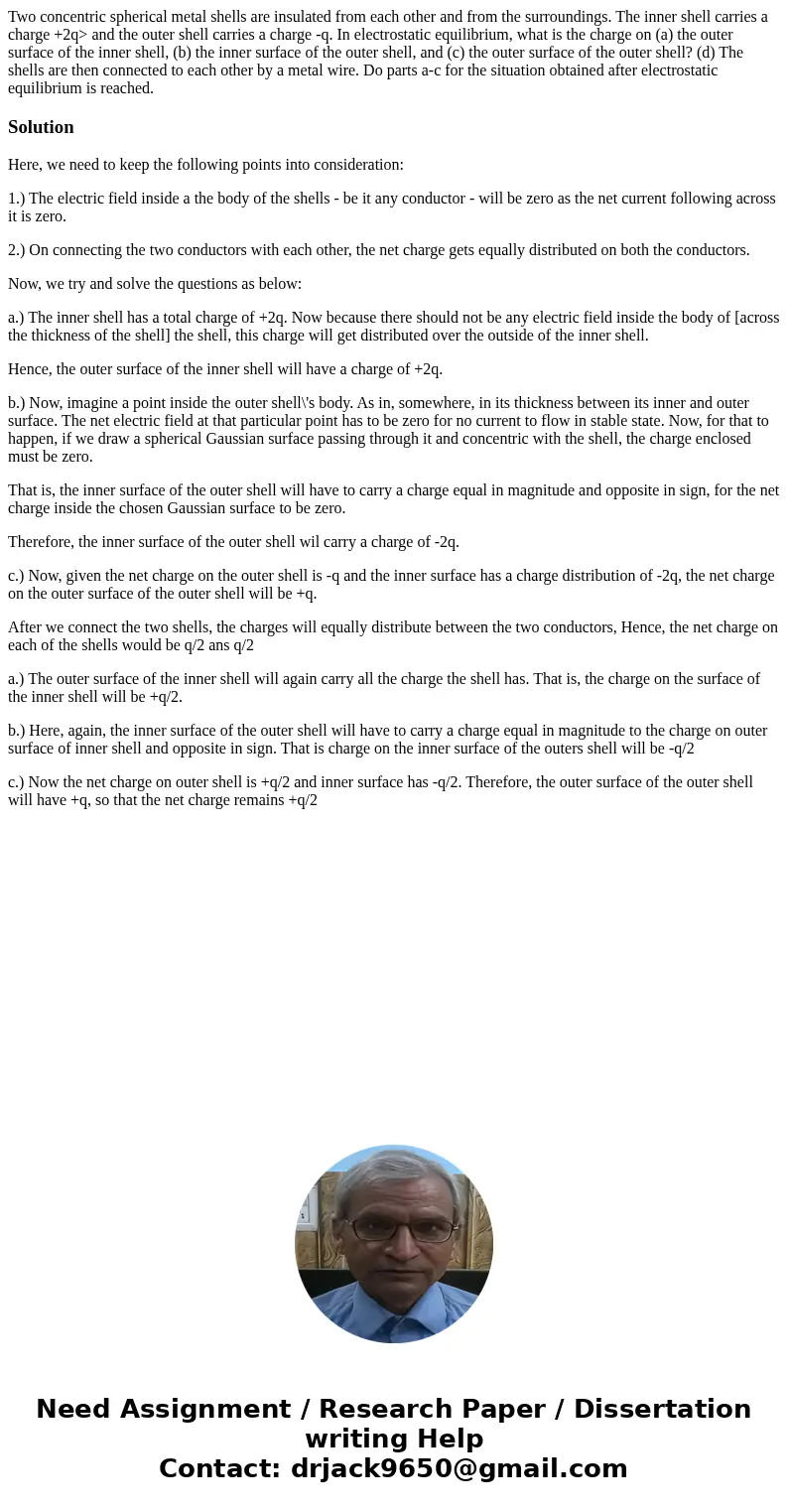Two concentric spherical metal shells are insulated from eac
Solution
Here, we need to keep the following points into consideration:
1.) The electric field inside a the body of the shells - be it any conductor - will be zero as the net current following across it is zero.
2.) On connecting the two conductors with each other, the net charge gets equally distributed on both the conductors.
Now, we try and solve the questions as below:
a.) The inner shell has a total charge of +2q. Now because there should not be any electric field inside the body of [across the thickness of the shell] the shell, this charge will get distributed over the outside of the inner shell.
Hence, the outer surface of the inner shell will have a charge of +2q.
b.) Now, imagine a point inside the outer shell\'s body. As in, somewhere, in its thickness between its inner and outer surface. The net electric field at that particular point has to be zero for no current to flow in stable state. Now, for that to happen, if we draw a spherical Gaussian surface passing through it and concentric with the shell, the charge enclosed must be zero.
That is, the inner surface of the outer shell will have to carry a charge equal in magnitude and opposite in sign, for the net charge inside the chosen Gaussian surface to be zero.
Therefore, the inner surface of the outer shell wil carry a charge of -2q.
c.) Now, given the net charge on the outer shell is -q and the inner surface has a charge distribution of -2q, the net charge on the outer surface of the outer shell will be +q.
After we connect the two shells, the charges will equally distribute between the two conductors, Hence, the net charge on each of the shells would be q/2 ans q/2
a.) The outer surface of the inner shell will again carry all the charge the shell has. That is, the charge on the surface of the inner shell will be +q/2.
b.) Here, again, the inner surface of the outer shell will have to carry a charge equal in magnitude to the charge on outer surface of inner shell and opposite in sign. That is charge on the inner surface of the outers shell will be -q/2
c.) Now the net charge on outer shell is +q/2 and inner surface has -q/2. Therefore, the outer surface of the outer shell will have +q, so that the net charge remains +q/2

 Homework Sourse
Homework Sourse